

This project is theoretically possible without access to a thicknesser for preparing the many strips joining the main frame members, or a morticer for making nice squared-off holes for them to fit into. I don't think I could be bothered to do all that by hand these days, however.
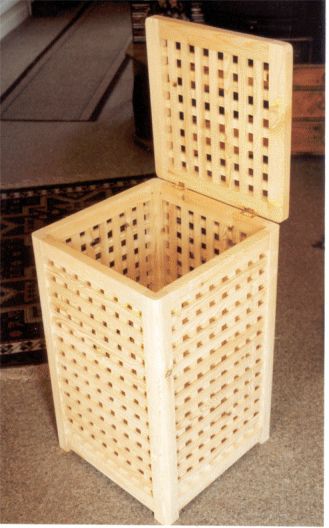
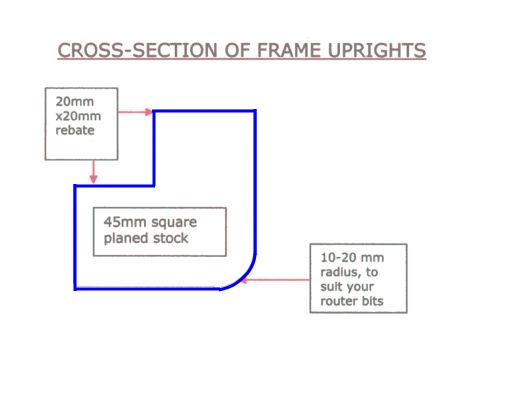
The size of the finished article is a matter for individual taste, but it is worth sizing it so that the spaces between the strips are the same width as the strips themselves. Our original plan was to have a cloth lining for the basket, but it works very well with one of those pop-up laundry bags you see everywhere.
OTHER DETAILS (all sizes planed):
Frame sides 45 x 25 mm
Lid edges 45 x 25 mm
Slats 22 x 10 mm
All the major frame sections were morticed and tenoned together, but not glued and cramped until the slats had been prepared, cut to length and inserted into the frame: a fiddly job!
This planter was made especially for a large plant in a very large pot, and the dimensions were dictated mainly by the size of the pot. Castors are set into the 4 corners to make the finished item easy to move: the original plan was to have rope handles to make it even easier to pull the planter around, but these turned out to be unnecessary.
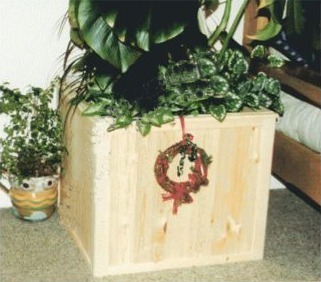
As mentioned previously, the dimensions of the planter are a matter for personal taste: such factors as the available timber, available cutters and the size of the plant pot will be important when deciding on the size. The casters make moving the planter a whole lot easier, and are mounted on triangular frames in the 4 corners of the planter. I deliberately set the frames at a height which allowed the castors to protrude no more than 10 mm below the base of the planter, as the depth of pile on our carpet meant that the planter would appear to be sitting on top of the carpet. Yet again this is a matter for personal taste. I supported the plant pot on 4 narrow strips of hardwood running across the planter: other means of support are no doubt equally valid.
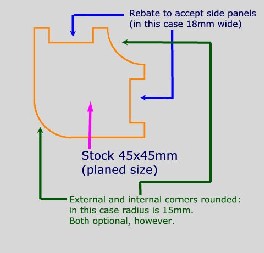
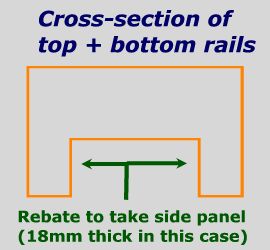
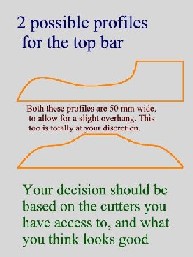
This was inspired by a suite we had owned many years previously but had been forced to leave behind during a house move. The side sections are made from 4 parts all glued and tenoned together: back and front legs, armrest and side piece. These side sections are then joined by cross rails (4 per unit), and by varying the length of the cross rails each unit can be made into a chair, a 2-seater settee or a 3-seater settee. The cross rails are attached to the side sections by dowels and by threaded rod with side dowels and brass caps.
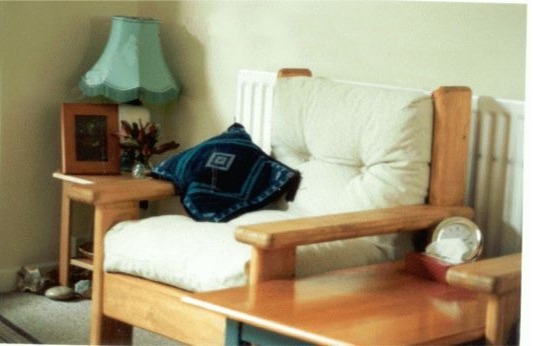
When I made the suite I had access to a tenoner and was therefore able to scribe the joints where the side rail joins the front and back legs. At present I do not have a tenoner and were I to make this again I would have to use normal mortice and tenon joints and rout the edges afterwards. If you decide to do this make sure you plan carefully and do not glue the pieces together until you have test assembled them. The front leg is attached to the armrest by a standard mortice and tenon, and the armrest fits into a cut-out on the rear leg.
The cross rails are 600 mm long for a chair, and 1200 or 1800 mm long for 2-seater or 3-seater settee. They are secured to the side frames by a single threaded rod, side dowel and brass cap assembly, and 2x10mm dowels (although the centre rail on the back is fine with only the dowels). A small block is attached to the front rail to support the seat support assembly, which simply rests on the angled rail at the back. The seat supports themselves are overall size 595 mm square and are made from 50x25mm planed timber jointed at the corners. Pirelli webbing is used (at a spacing equal to its own width) to join opposite sides.
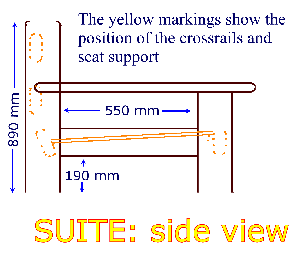
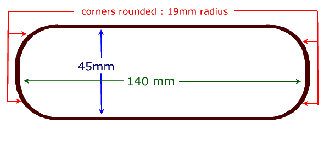
Copyright © Woodwork Projects